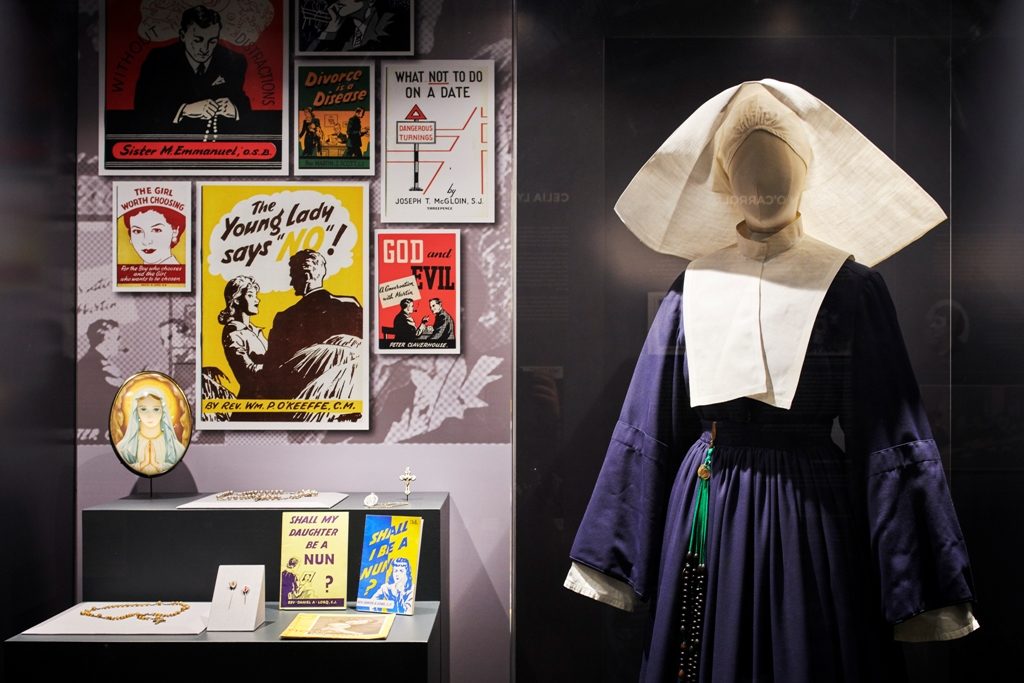
Photo Ros Kavanagh
‚Pop-up’ museum – 100 Years of Women in Politics and Public Life in Ireland
Ireland’s touring ‘pop-up’ Women’s Museum which has traveled all over the country, is believed to be the first of its kind in the world.
It chronicles the history of Ireland over one hundred years from the foundation of the State, and the role women played in politics and public life throughout that period.
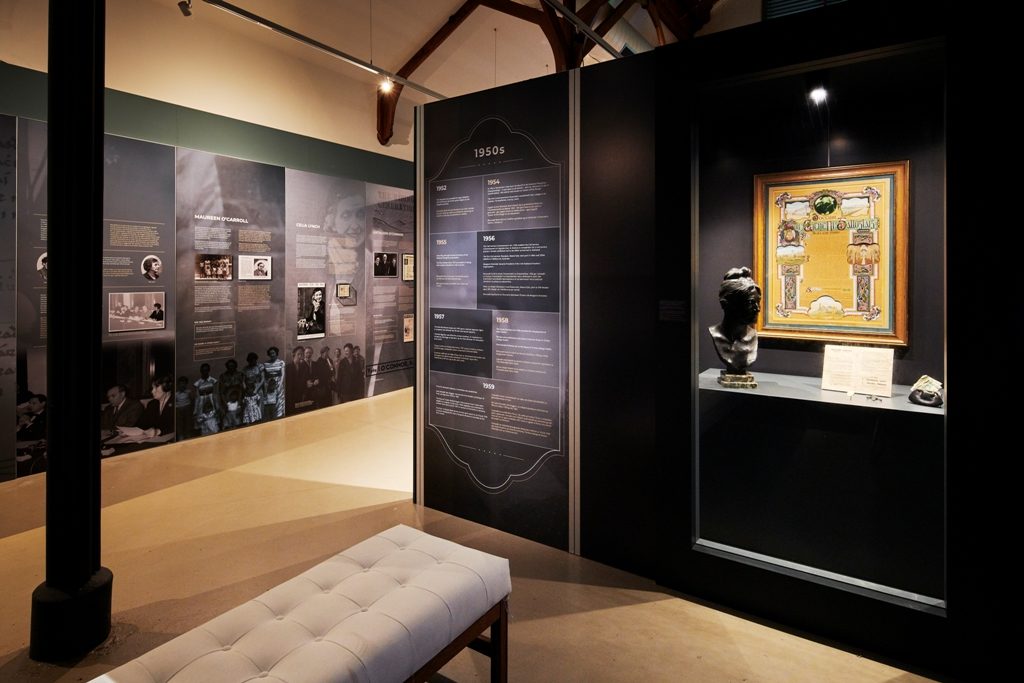
Photo Ros Kavanagh
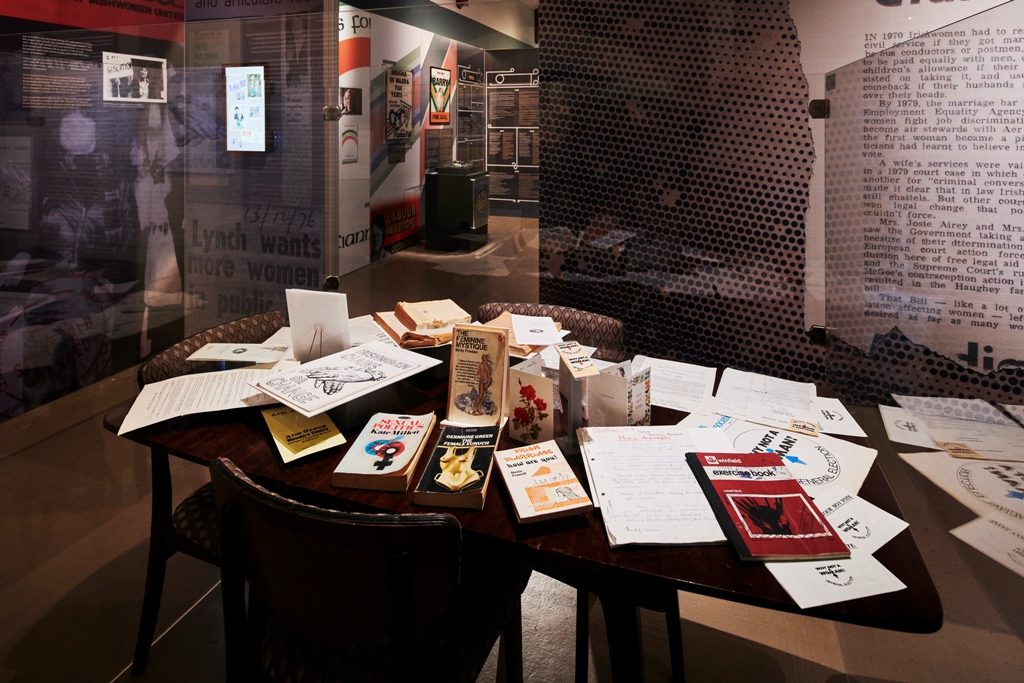
Photo Ros Kavanagh
The pop-up, a Department of Culture, Heritage and the Gaeltacht initiative under the Irish Government’s Decade of Centenaries 2013-2023 programme, is touring a number of venues in the four provinces in the country before it returns to Dublin Castle in Spring 2020, to Dublin Castle where it opened on 14 December 2018 to mark the centenary of the 1918 General Election where women could first exercise their franchise and stand as candidates for election.The pop-up provides insight into the lives of some of the many hundreds of women, who helped shape Ireland from the 1920s to the present day,personal portraits are laid out with inter-actives as well as objects, clothing, rare manuscripts and furniture gathered from private collections. Some of these women became members of the Irish and/or European Parliament, two became President of Ireland but not all are so well known.
It is a unique project of primary research with over 100 hundred women donating from their personal archives including those who have reached the highest political office. Ireland has had four women who have held the office of Tánaiste, Deputy Prime Minister.
Included in its list of venues for exhibition is 23 Kildare Street in Dublin city, the first purpose-built Department of Labour. This is to celebrate the role of Constance Countess de Markievicz who was the first elected female MP in the House of Commons, Westminster, the first Teachta Dála (member of the Irish Parliament) and the first female Cabinet Minister in our underground government during the campaign for independence 1919-1923.
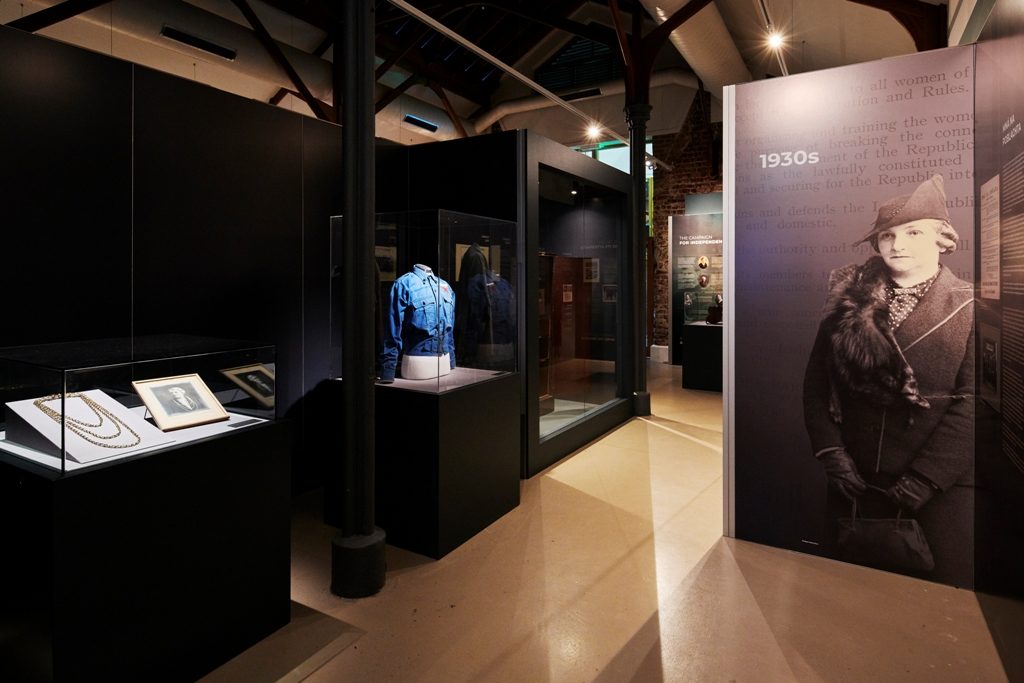
Photo Ros Kavanagh
Starting with Ireland’s campaign of independence, it tells the story of how this nation building was achieved with the setting up of an alternative administration, with a particular emphasis on the role of women in the foundation of the Irish Free State, which later became the Republic of Ireland.
The ‘pop-up’ also tells the story of Irish politics and gives the context for why it took 60 years – from 1919 to 1979 – for Ireland to have its second woman at the Cabinet table.
Overall, the museum presents us with an opportunity to reflect on the formation of an independent Ireland from civil war to mass emigration, and how those events shaped the lives of women in Ireland over 100 years.
The ‘pop-up’ offers a feminisation of Irish history as it interrogates the way in which Irish women are written into the official canon of history. It recognizes and highlights the importance of collating and collecting archives, of documenting the contribution of the women through research and ensures that the narrative of the centenary commemorations and by extension, Irish history, includes a fuller account and appreciation of the important role played by women in our shared national story.
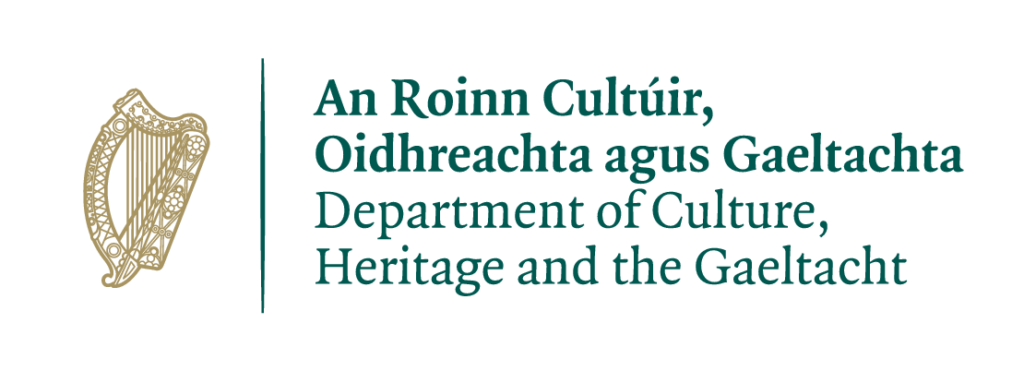
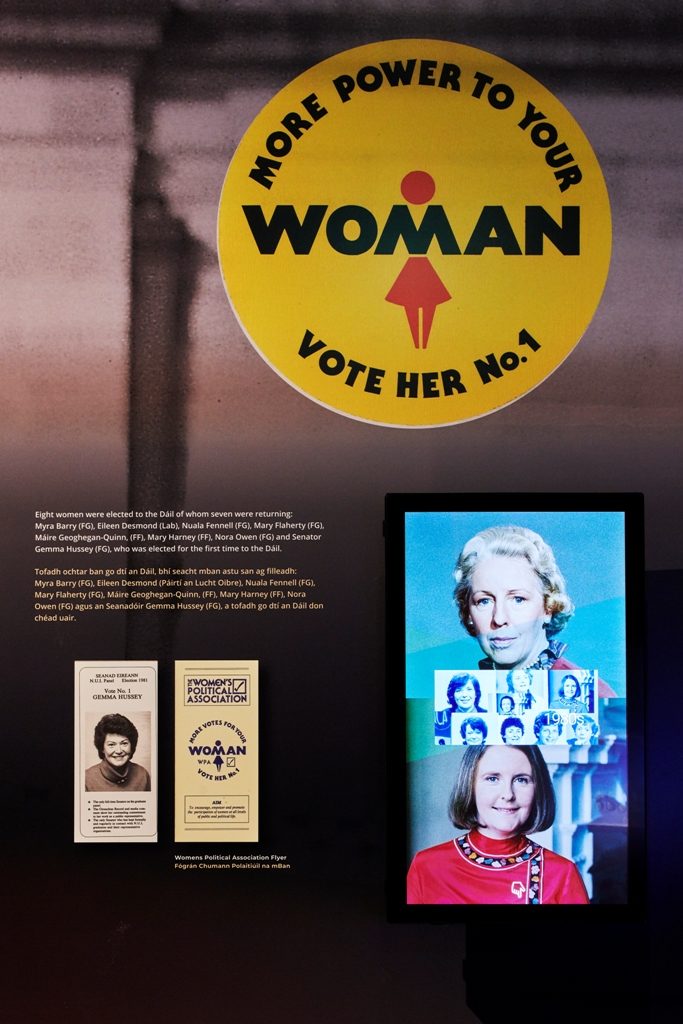
Photo Ros Kavanagh
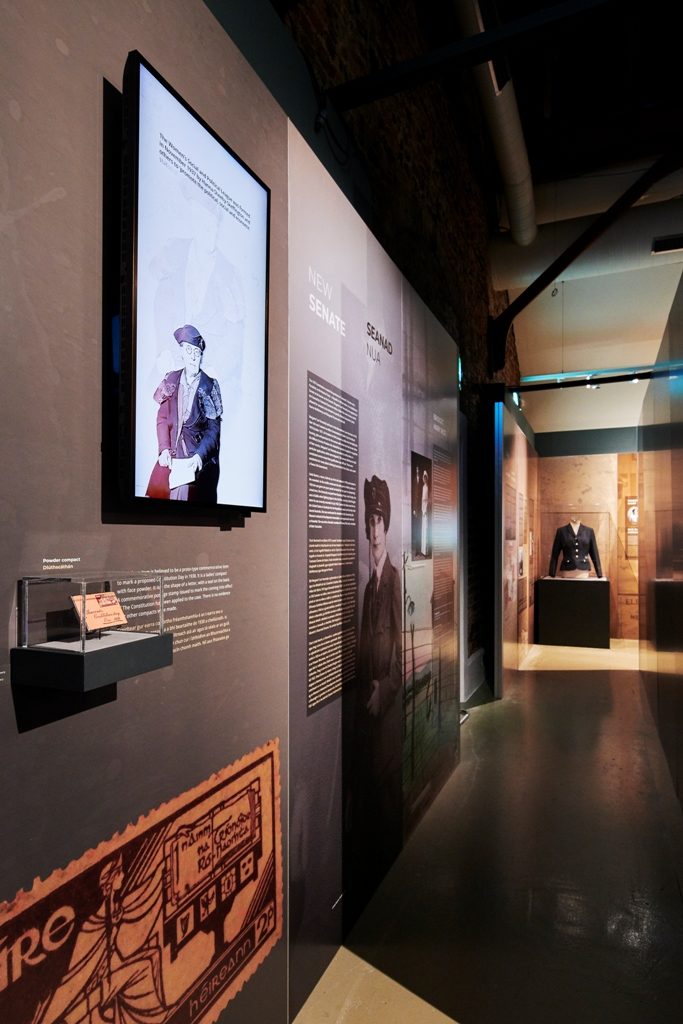
Photo Ros Kavanagh